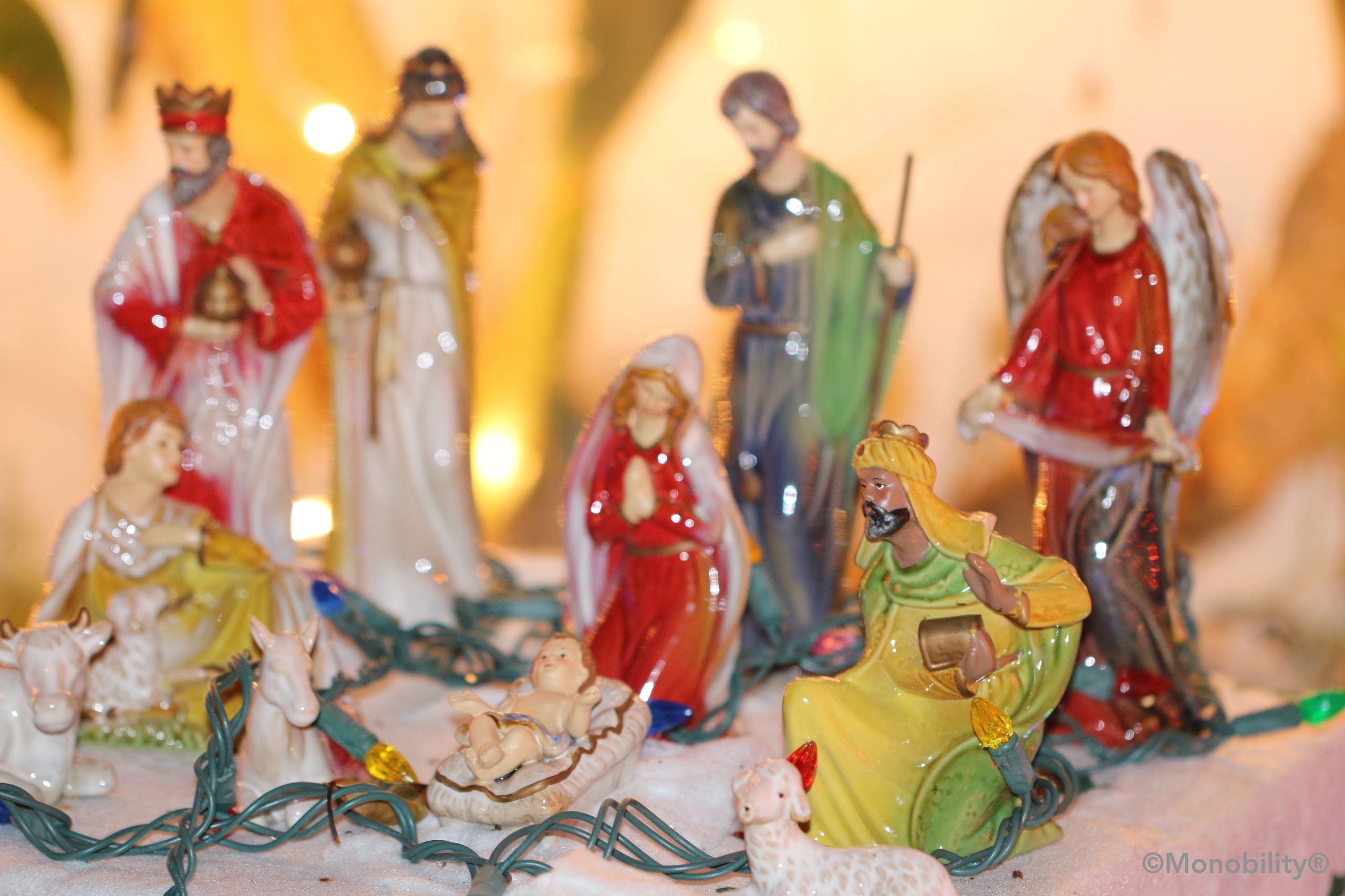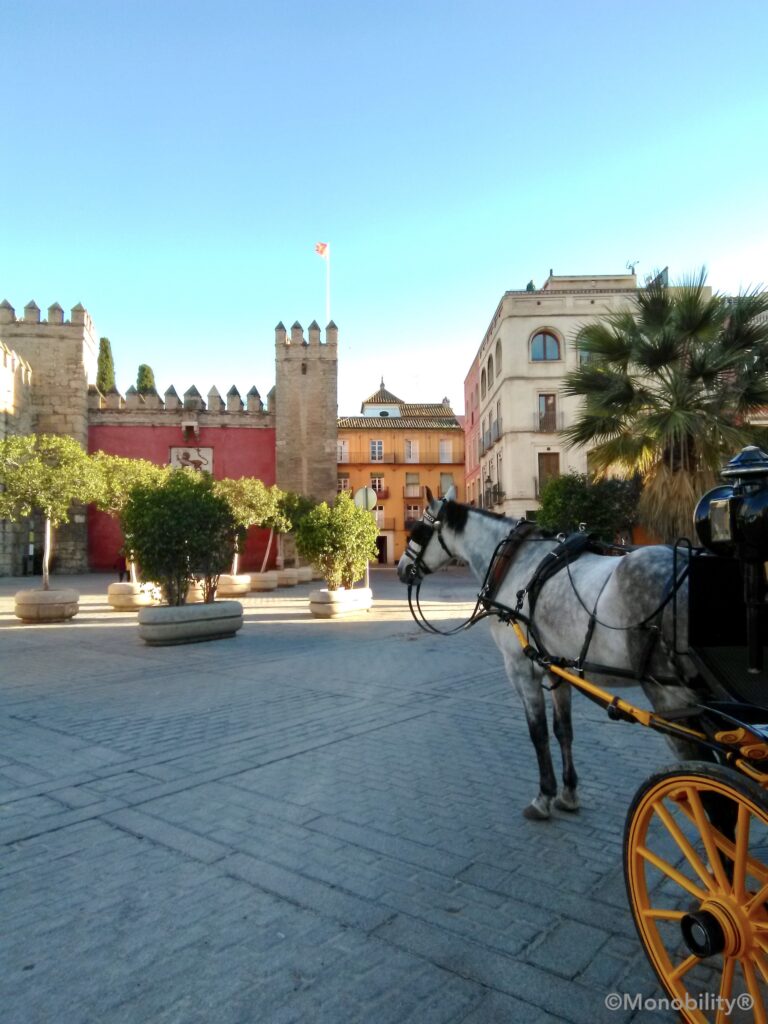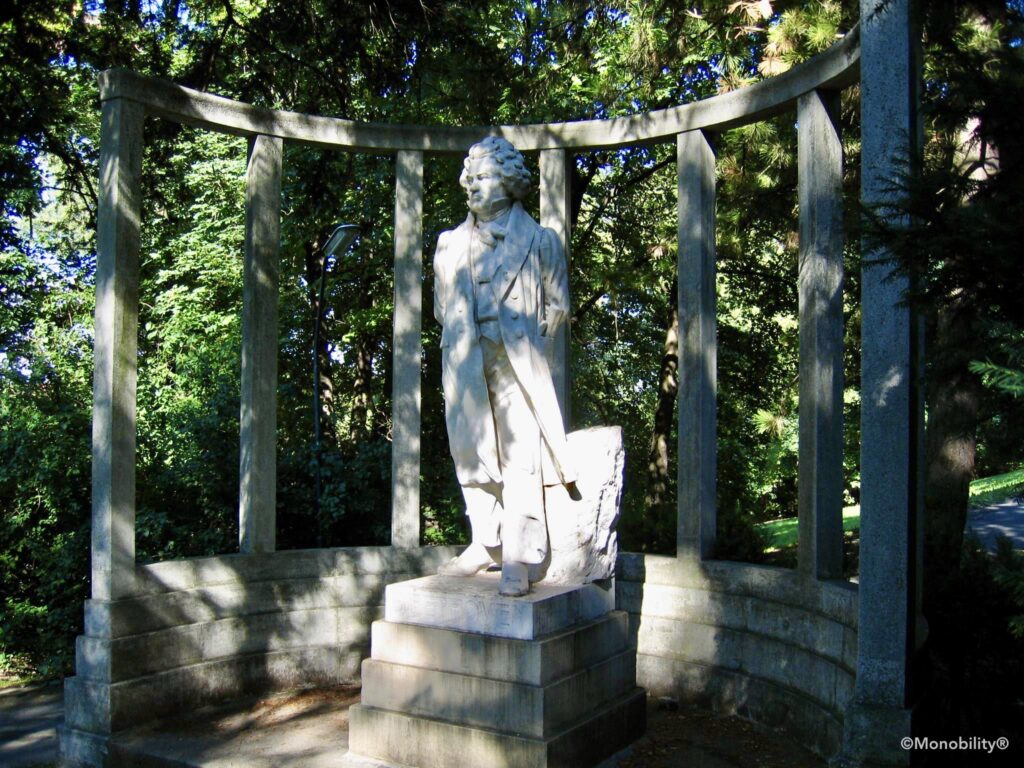In English, to modify a noun with a clause, you say a relative pronoun (which, who, what, that, whom, when, where) AFTER the noun, followed by a relative clause [Subject + Verb + Object … etc.]. In Korean, however, the modifying relative clause [Subject + Object …. + Verb] comes BEFORE the modified noun. And there is no such thing as relative pronouns in Korean. Instead, you change the ending of the verb that comes just before the modified noun, into -은 / -는, if it’s in present tense. (-은 if the verb stem ends with a consonant, -는 if it ends with a vowel.)
하얀 눈이 내려오는 이 거리 = This street where white snow is falling down
그대와 둘이 손잡고 걷고 싶은 이 거리 = This street where I wish to walk with you, hand in hand
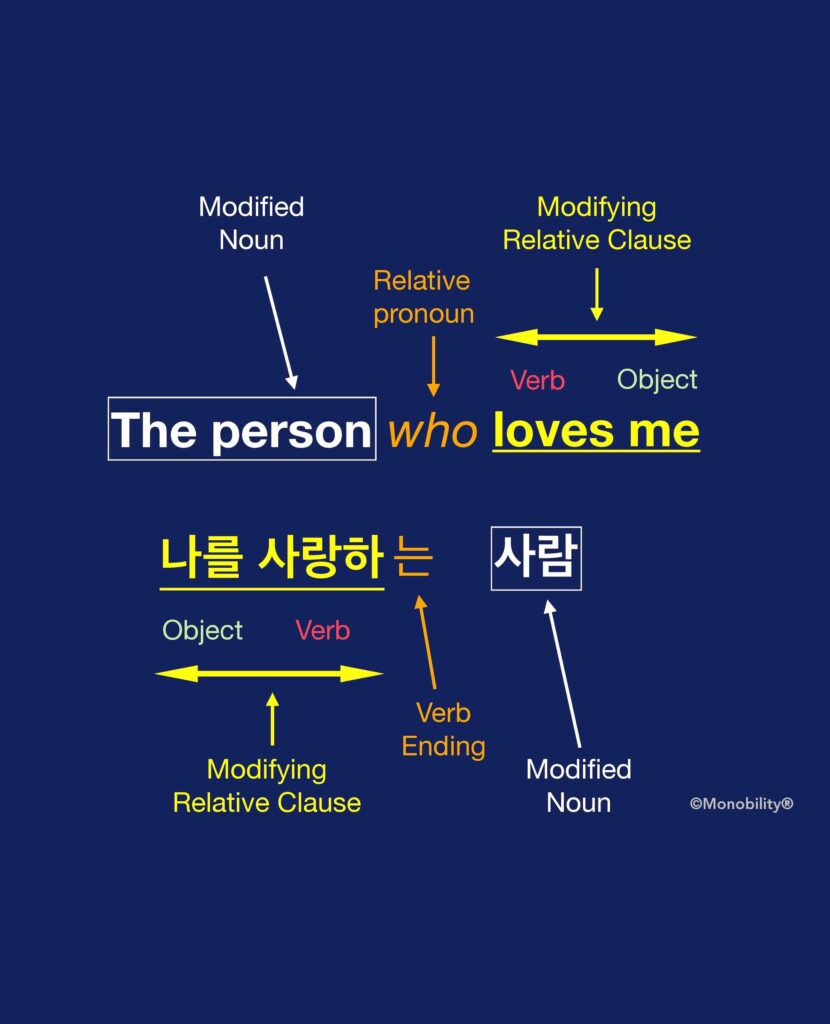
Note that in Korean, the verb ALWAYS comes at the END of all clauses, whether it’s a main clause or a relative one. In a relative clause, the word order pattern is exactly the same as in a main clause [Subject + Object … + Verb]. The particular verb endings -은 / -는 play the role of the relative pronouns. Unlike English, the verb endings -은 / -는 do NOT vary according to person, things, place, time, as in who, which, where, or when. But the endings change according to the tense. Sounds too complicated? For now, it would be enough to know that -은 / -는 are for the present tense relative clauses.
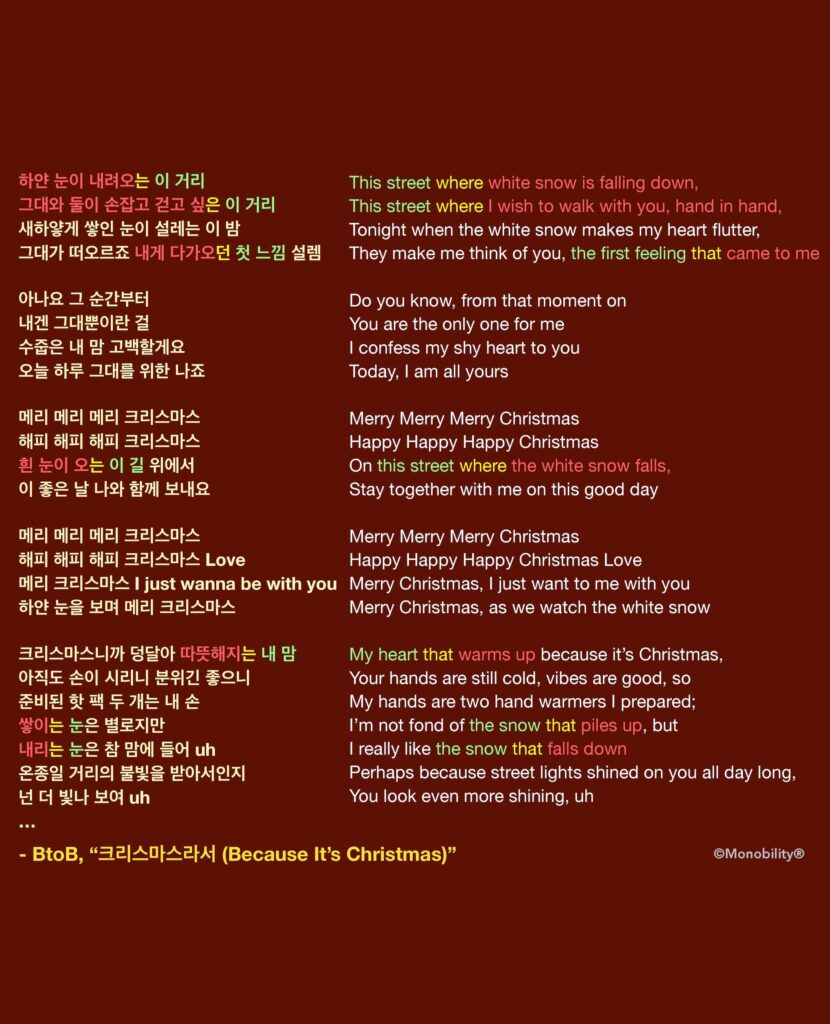
More examples. Please see the pattern difference between Korean and English:
너를 기다리는 사람 = The person who waits for you
내가 기다리는 사람 = The person (whom) I wait for
내가 바라는 손님 = The guest (that) I wish for
청포도가 익어가는 시절 = The season when green grapes are ripening
제가 원하는 것은 자유입니다 = What I want is freedom.
크리스마스가 겨울이 좋은 이유에요 = Christmas is the reason why I like Winter.
Merry Christmas, Everyone!
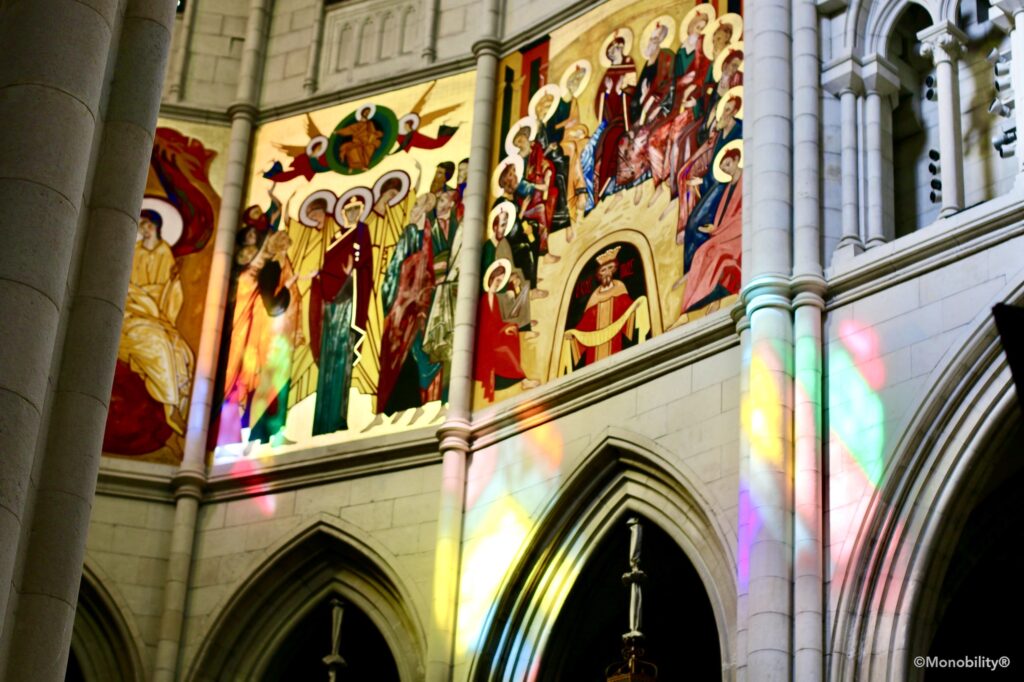
Follow us on Facebook for much more:
